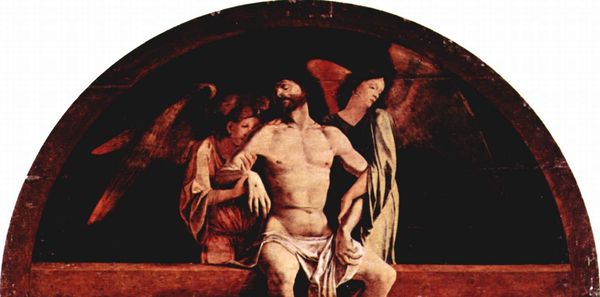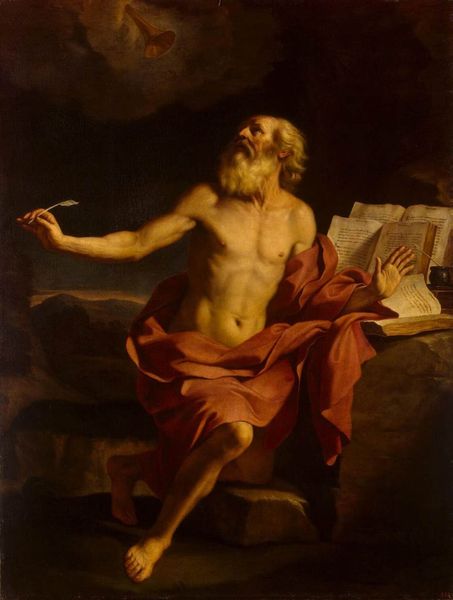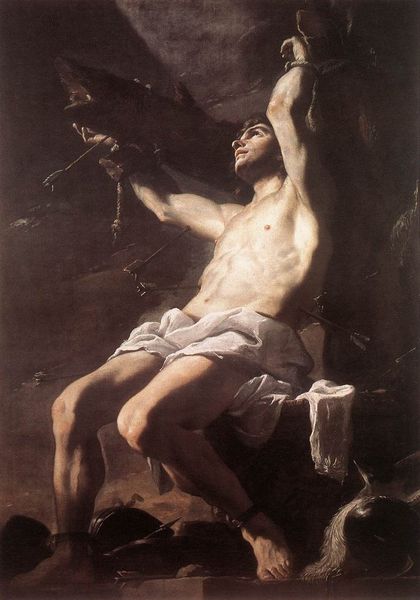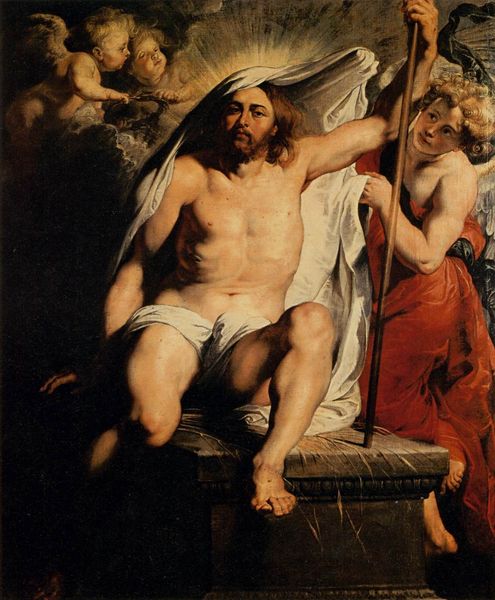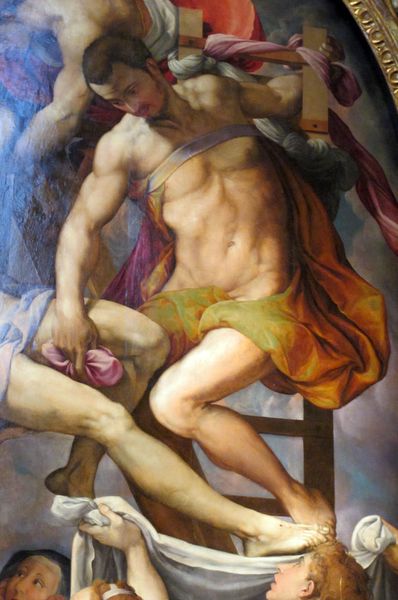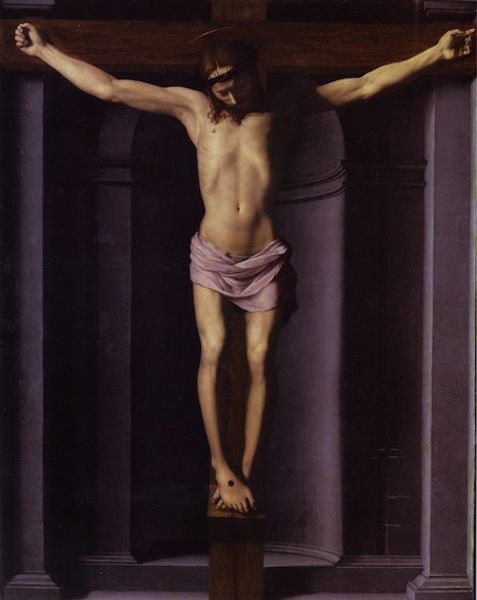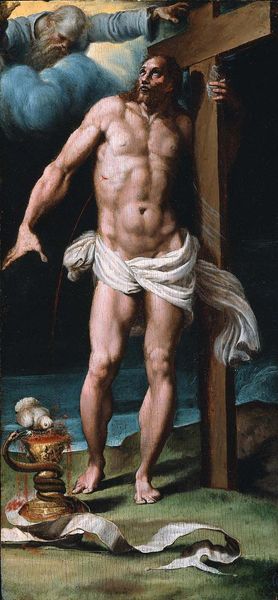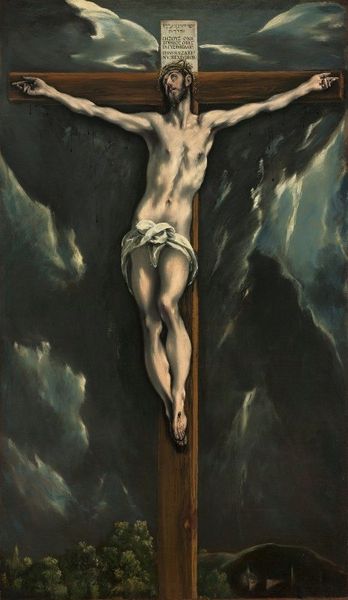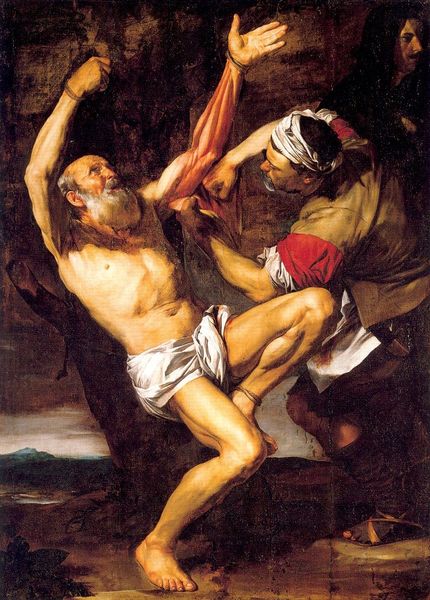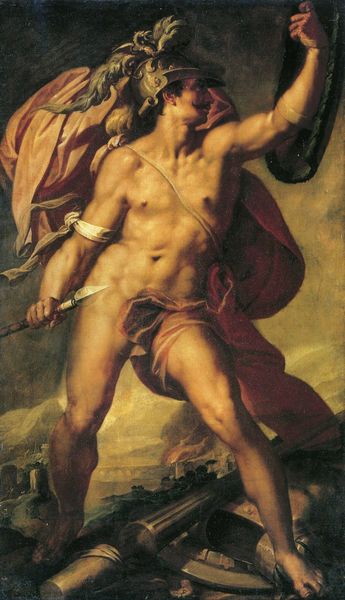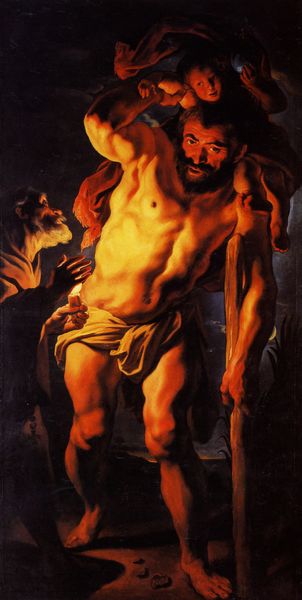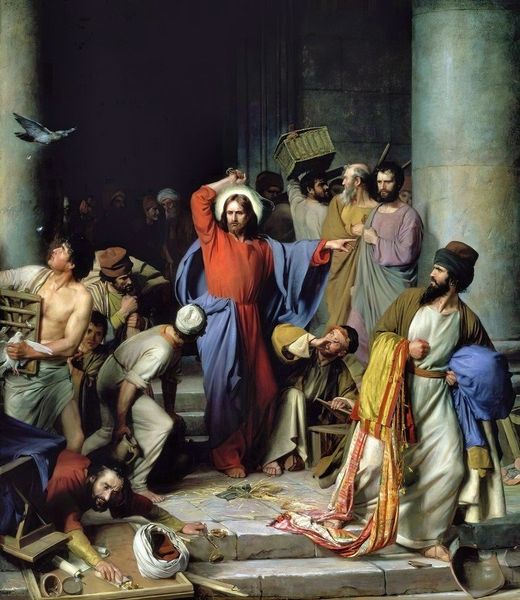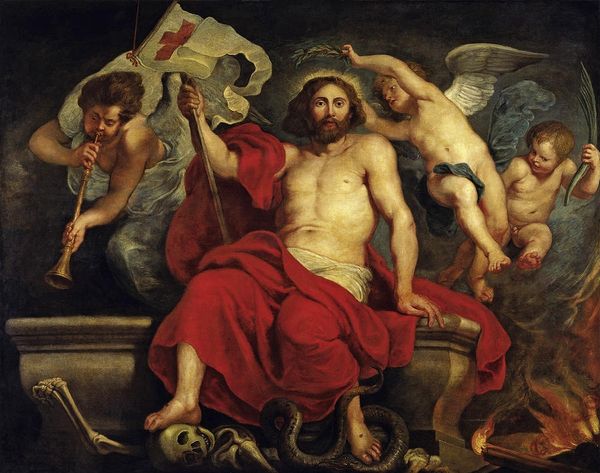
Copyright: Public domain
Curator: This is "São João Batista no cárcere" or "John the Baptist in Prison," painted in 1852 by Victor Meirelles. Editor: The stark, almost theatrical lighting immediately grabs me. It highlights the languid pose against the brutal reality of that stone cell. Curator: Indeed. Meirelles was deeply engaged with the historical and political context of his time. His choice to depict John the Baptist, a figure associated with defiance against authority, feels pointed. I'm especially drawn to the contrasting signifiers of holiness—the subtle halo, his gaunt frame against his languid pose conveying defiance. The almost erotic depiction feels almost an afront. Editor: From a material perspective, look at the precision of the rendering—it almost feels photographic for its time. And notice the layering of the paint to give the stone such palpable texture. The materiality here speaks volumes: stone, flesh, light—all components of physical existence and human experience of the historic John. Even in imprisonment, this John owns the gaze upon his laboring flesh. Curator: This academic painting reflects and refracts tensions of identity and race during that historical context as well. It engages with classical conventions of portraying the male form and perhaps hints at colonial histories of control of enslaved labor in this New World context. I read something coded. Editor: Absolutely. And even in the smooth surface, consider Meirelles’s choices as an artist in the act of creation. Every brushstroke, every decision about light and shadow, contributes to the story—it speaks to the labor and material realities shaping the final presentation to a wealthy, academic, likely Brazilian elite. What are they to make of a lounging body and the symbols of authority around him? Curator: A fascinating duality of luxury and subjugation within this artistic act itself... Editor: Yes! The creation and subsequent consumption by the patrons themselves implicates their role in a network of material comfort sustained through often invisible realities of political and economic injustice. It complicates any attempt at pure beauty. Curator: Thanks, this really broadened my reading of this art work, offering perspectives that acknowledge the nuances of history, materiality, and social positioning. Editor: Agreed. This helps reveal dimensions I would never have encountered on my own, so let us move on to the next work.
Comments
No comments
Be the first to comment and join the conversation on the ultimate creative platform.
